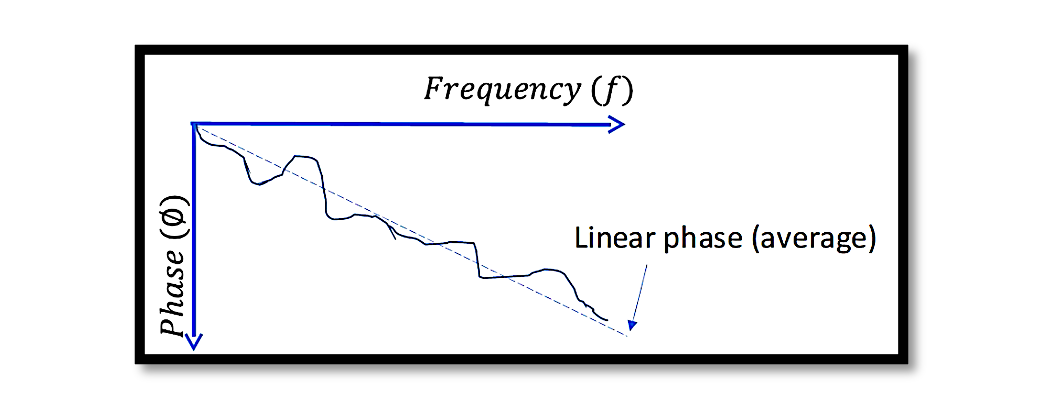
Understanding Group Delay Measurement and its Significance
Introduction:
Group delay, although a more intricate measurement, plays a crucial role in analyzing the behavior of electronic devices. Utilizing a vector network analyzer simplifies the process of measuring group delay, a parameter often expressed in seconds within the time domain. This metric signifies the transit time of a signal concerning its frequency as it traverses through a specific device. The essence of group delay measurement lies in understanding the temporal aspects of signal transmission through the device.
Moreover, the primary motivation behind measuring group delay is to assess the phase distortion introduced by the device. Phase distortion can be a source of complications in wireless communications, leading to modulation-demodulation issues. This distortion is frequently attributed to nonlinearities within the device. While passive components generally exhibit linearity, indicating minimal deviation in group delay across frequencies, anomalies may arise during measurement. Discrepancies from point to point in frequency measurements could indicate nonlinearity and potential phase distortion within the device. Thus, the measurement of group delay is a valuable tool for ensuring the linear behavior of electronic components and identifying any phase-related irregularities that might impact performance.

To delve deeper into the roots of group delay measurement, consider a scenario where we examine the phase versus frequency relationship. When sweeping the frequency across a component, one would observe a gradual increase in phase at the output concerning frequency changes. The underlying principle is that as the frequency varies, the wavelength shortens. Ideally, in a perfectly functioning system, this behavior would follow a linear pattern. However, deviations from linearity manifest as fluctuations in the phase response. In essence, the average linear phase of the device represents the expected behavior, while the deviations create the phase distortion. These deviations, often observed as peaks and troughs, signify departures from the anticipated linear response, providing valuable insights into the device’s performance characteristics and potential distortions.

Phase Measurements and Group Delay Calculation
The foundation of group delay lies in the phase measurement previously discussed. To derive group delay from this phase measurement, consider it as the negative derivative of the phase with respect to frequency. Essentially, group delay represents the slope of the phase curve. However, to express it in time, a conversion from phase to time measurement is necessary. In an ideal scenario, the result would be a constant or a flat line, signifying a smooth and linear phase response. Any deviations from this constant represent the phase distortions mentioned earlier—undulating variations that need to be scrutinized and quantified. Effectively, group delay becomes the quantifiable metric that encapsulates the temporal implications of these phase distortions, aiding in the comprehensive assessment of a device’s performance.

Practical Approach to Group Delay Measurement Using a Vector Network Analyzer
Now that we’ve established the theoretical basis for group delay, let’s explore the practical method of measurement. Employing a vector network analyzer (VNA) simplifies the process considerably. However, a crucial caveat must be emphasized—accurate referencing is paramount. Ensure that your measurements are referenced directly to your Device Under Test (DUT), or as close as possible to the component in question. This referencing is particularly critical for most applications, as it ensures the reliability and relevance of your measurements.
The VNA, a versatile instrument, not only provides phase measurements but, in certain instances, also offers the option to display group delay directly. This user-friendly feature transforms what might seem like a complex measurement into a straightforward task. While group delay measurements might not be a routine practice, having the capability to perform them with a VNA can prove immensely valuable, offering insights into the temporal characteristics of your device that might otherwise go unnoticed. So, although not a widespread procedure, mastering group delay measurements with a VNA could prove to be a useful skill for future endeavors.
Advanced Techniques for Optimizing Group Delay Measurements
Taking the exploration of group delay measurements a step further involves considering advanced techniques and additional factors for an in-depth analysis. When utilizing a vector network analyzer (VNA), precision is key. Ensure that the reference point for your measurements is as close as possible to the specific ports or components under examination. This practice becomes particularly critical when aiming for high accuracy and relevance in diverse applications.
One notable aspect to be mindful of is the potential variability in group delay measurements across different frequency points. In cases where the VNA provides an option to display group delay, it is beneficial to analyze the results across a range of frequencies. This comprehensive assessment allows for a more nuanced understanding of how group delay behaves under varying conditions.
Furthermore, when delving into the intricacies of group delay measurements, exploring the impact of environmental factors and external influences on the device becomes imperative. Temperature variations, signal power levels, and other external conditions can potentially introduce changes in the group delay characteristics. Therefore, conducting measurements under different environmental scenarios provides a more holistic view of the device’s performance.
As technology advances, it’s essential to stay informed about updates and enhancements in vector network analyzers. Manufacturers may introduce new features and functionalities that further streamline the process of group delay measurements. Regularly updating equipment and staying abreast of technological developments ensures that your measurement techniques remain at the forefront of accuracy and efficiency. In summary, while group delay measurements may seem specialized, mastering advanced techniques and staying attuned to technological advancements can enhance the precision and applicability of your assessments, making them invaluable tools for understanding and optimizing device performance.

Learn more about this topic by taking the complete course ‘Introduction to RF Testing Fundamentals and RF Test Architecture – RAHRF412’. Watch the course videos for more detailed understanding. Also checkout other courses on RF system and IC design on https://rahsoft.com/courses/. Rahsoft also provides a certificate on Radio Frequency. All the courses offer step by step approach.
Tag:Group delay



